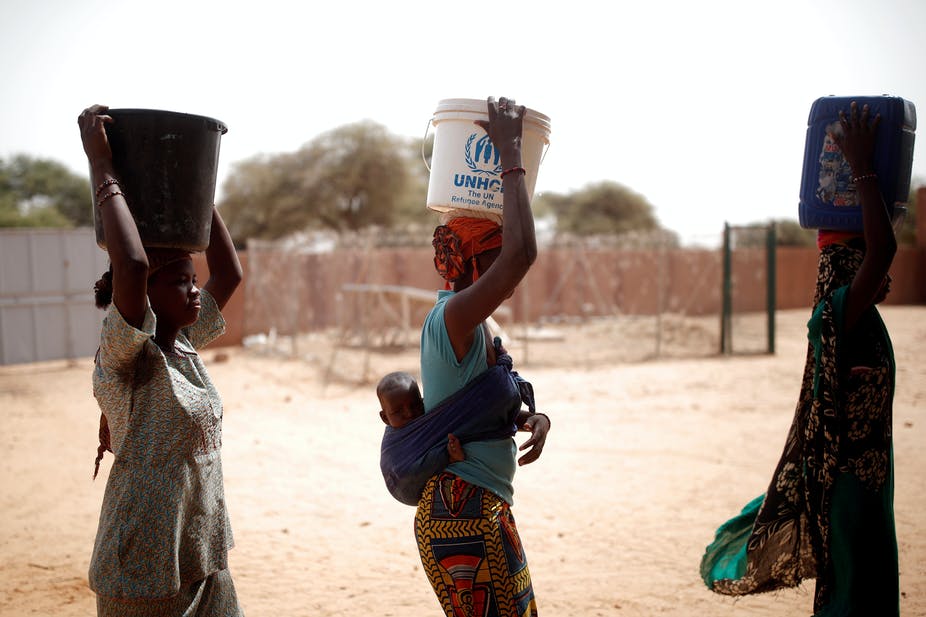Everyone loves beaches, the warm sand, the blue water, the bright sun, it all just works. Ask anyone who has had the privilege of going to a beautiful beach and they’d tell you there’s really nothing quite like it.
However, as many of us are aware, pollution at beaches is a global problem affecting every single coastline. This pollution doesn’t just negatively contribute to the aesthetics of a beach but more importantly, it severely affects the wellbeing of all the wildlife that inhabit the area.
Amongst the wildlife that is severely affected are the turtles. In Malaysia, there are four species of turtles that are native to our oceans. They are vital for the underwater ecosystem and play a crucial role in maintaining coral reef health. Sadly, the turtles have been struggling to survive due to the overexploitation of coral reefs and pollution, The number of turtles in our country has declined by 99 per cent since the sixties.
Egg poaching is another factor contributing to the extinction of the species with there being no laws to protect eggs from being poached and sold. Although in Sabah and Sawarak, the hunting and selling of turtle eggs have been banned, no such rules apply to Peninsula Malaysia.
These aren’t the only issues that have played a role in the decreasing number of turtles in our ecosystem, however, all hope is not lost. At Lang Tengah Turtle Watch, they work hard towards conservation and protection.
We spoke to Amelin Bhullar, who just completed her internship, to understand a little more about the work they do:
Why turtles?
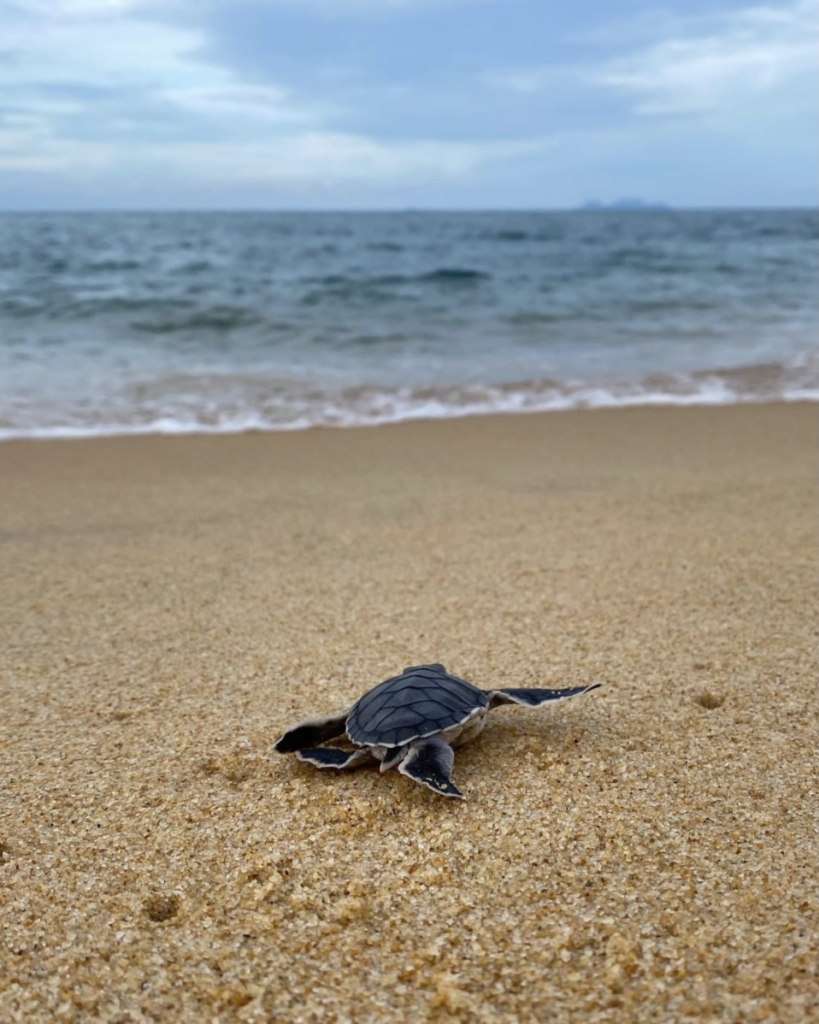 For me personally, it has a lot to do with turtles being positively associated with school holidays, as a kid we would drive out to a turtle conservation centre. I absolutely loved seeing the hatchlings. As I got older I knew I wanted to be involved with something so selfless. A major factor that even further made me want to get involved was because turtles are rapidly becoming endangered and we must conserve turtles for the good of biodiversity, ecological and marine health. They play a big part in maintaining seagrass beds and are an integral part of the marine food web. They’ve been around a really long time and don’t deserve to go extinct just because humans can’t get their shit together.
For me personally, it has a lot to do with turtles being positively associated with school holidays, as a kid we would drive out to a turtle conservation centre. I absolutely loved seeing the hatchlings. As I got older I knew I wanted to be involved with something so selfless. A major factor that even further made me want to get involved was because turtles are rapidly becoming endangered and we must conserve turtles for the good of biodiversity, ecological and marine health. They play a big part in maintaining seagrass beds and are an integral part of the marine food web. They’ve been around a really long time and don’t deserve to go extinct just because humans can’t get their shit together.
What does a day look like at Lang Tengah?
We have two project sites, each one very exciting and different from the other. At Tanjong Jara, where we are at, it involves leaving the bed and checking on hatchlings at our hatchery at 5 am. Hatchlings naturally leave their nests at night and we check our nests for any eager hatchlings ready to go swimming and release them where it’s nice and dark! Around 9 am we then collect nests delivered to us from beaches outside our district and bury them at our hatchery. These nests are then available for adoption.
In the late afternoons, we do post-emergence inspections where we dig up nests that have had a mass emergence (when hatchlings come out in a large group, this usually happens once or twice per nest) from at least a week prior.
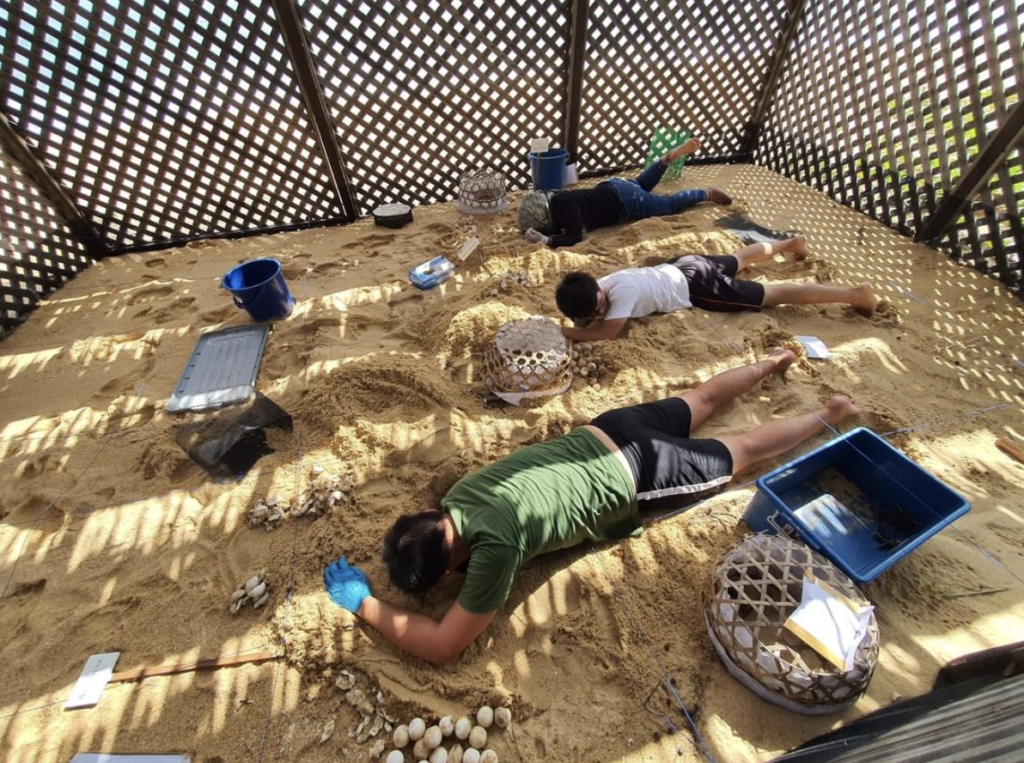
At night, we prep ourselves for mother turtles who show up on our beaches to lay their nests. We depend on our rangers to patrol the beaches and find turtles in the dark, they call us as soon as they find one – this can happen at any hour of the night. We rush out of bed and head over to where the mother turtle is, take pictures, collect data and wait for her to lay eggs so that we can retrieve the eggs and relocate them to the safety of our hatchery. All of us have gotten used to being perpetually sandy at every hour of the day. Sand, everywhere…
We work around the clock here. At our project site in Lang Tengah, we do not have the luxury of rangers, so we take turns patrolling every hour from evening to morning. Our days there are wonderfully filled with snorkelling, hiking and general camp-site activities. We have week-long volunteer opportunities for people who would like to experience a rustic, bare-bones camp experience while playing a positive part in turtle conservation.
Do you find that organisations like Lang Tengah can genuinely keep the turtles from going extinct or is stricter legislation necessary?
It really is hard to tell, there are just too many factors playing a heavy role in whether turtles will end up extinct or not. At Lang Tengah Turtle Watch, we focus on ensuring turtle eggs are kept safe for hatchlings to successfully emerge and go to sea. There’s very little we can do for baby turtles who are at sea, it would depend on nature and other anthropogenic factors on whether the turtles survive long enough to mature into adulthood.
Stricter legislation would be fantastic, but we also need cooperation from related stakeholders to ensure that rules and laws are being followed. A complete ban sounds ideal, only until black market loopholes and internal corruption takes place. Just like other conservation and environmental efforts, it takes time for us to see results and it takes at least 25 years for green turtles to reach sexual maturity and lay eggs. Despite everything in our way, like plastic pollution, rising sea levels and habitat destruction, we are hopeful our efforts mean something a few decades from now when the same hatchlings we release to come back to lay their nests on our shores.
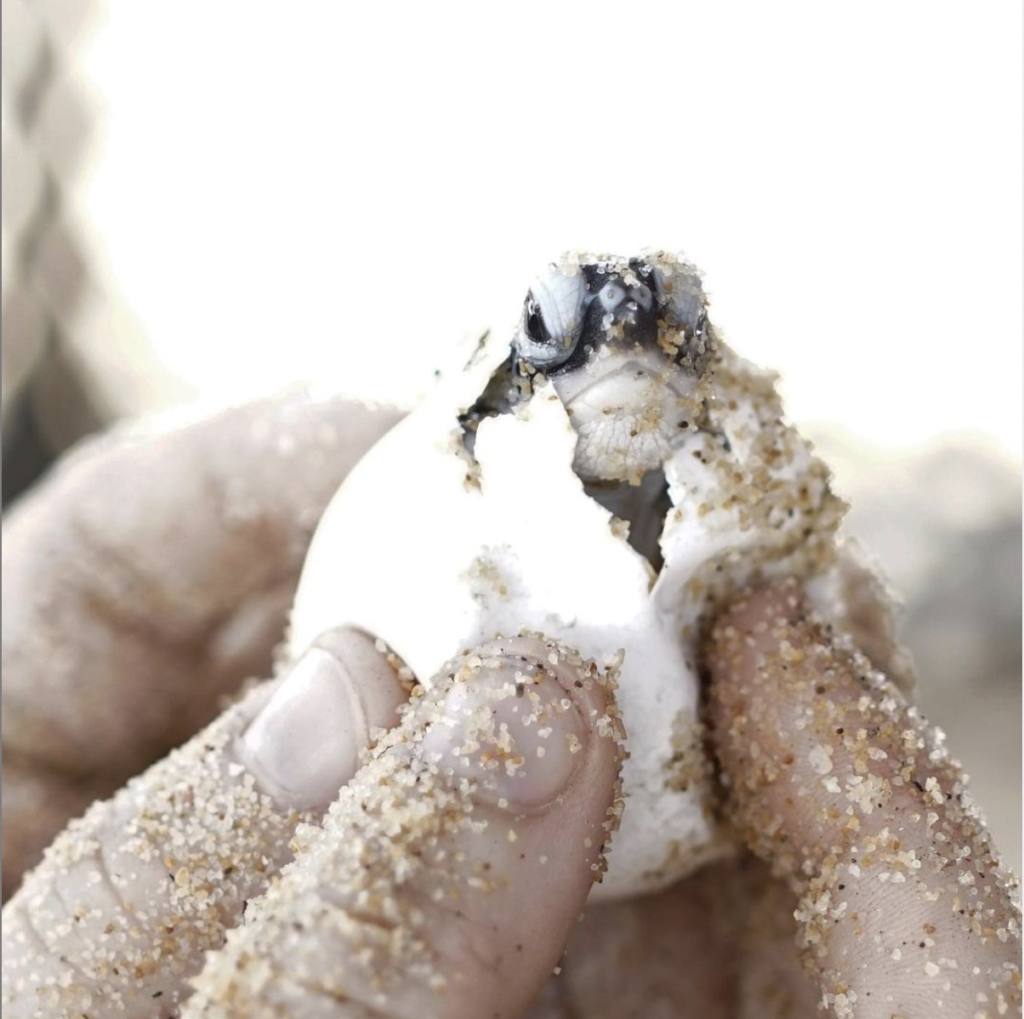
How many turtles per year do you hatch?
So far, this year we have retrieved 18,724 eggs! And 10,609 hatchlings have left our hatchery, which makes us so happy. They grow up so fast. Last year, we had 9801 eggs and 7154 hatchlings in total. Clearly, things are getting better.
What are some ways everyday individuals can help in ensuring the turtles are safe?
There are heaps of things every day people can do. One of the major problems we are tackling is plastic waste. Just about anyone can use reusable shopping bags and avoid single-use plastics. That would be a great first step. Global heating and rising sea levels are major threats to our darling turtles. As of late, it has become a lot more popular for people to be vocal about their opinions on social media and to hold our lawmakers more responsible for pro-conservative legislation. All of us are capable of relating with pro-marine conservation causes. It’s as simple as not wanting to see coral reefs disappear within this century and discussing it with people around you. Participating in environmental movements to push for a green future is something everyone can consider along the way.
Apart from turtles, are there any other projects you guys have going on?
We actually incubate painted terrapin eggs at our hatchery and at Lang Tengah island, we are involved with coral reef restoration. Painted terrapins are critically endangered and we do the same for them as we do for turtles, retrieve their eggs, relocate them to our hatchery and release the hatchlings when they have emerged.
Despite the fact that covid has been so detrimental towards us humans, it has generally been good for the environment – did covid positively impact the turtles and the ocean life that surrounds them?
Again, this is really difficult to tell. Initially, it seemed like it was ideal, less humans and activity would mean some relief for the turtles and that the environment gets to heal. However, the Covid-19 pandemic crash-landed at a time when over-consumption was already at detrimental levels. I can only imagine the number of plastic face masks that have washed into the ocean, the food takeaway containers and the amount of plastic packaging from a surge of online shopping.
Sure it would mean that things had slowed down in many industries, reducing pollution and habitat loss, that perhaps there would be less carbon output affecting global heating. Fewer tourists and beach activity is great for turtles, who like to avoid humans when nesting. We have noticed that turtles are coming up to more beaches that were constantly frequented by people before Covid-19.
It’s clear that for Lang Tengah Turtle Watch, turtle conservation is passion-driven – exactly what we need during these times. Even though it is a lot of work with a long wait-time for results, it is so important to continue hard work such as this. If you want to find out more about them, check out their website: https://www.langtengahturtlewatch.org/
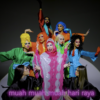


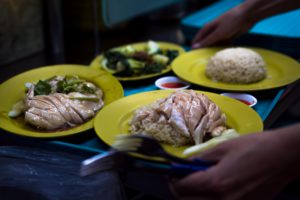


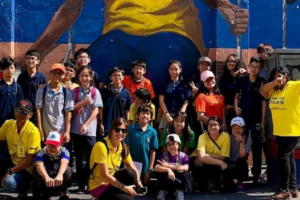
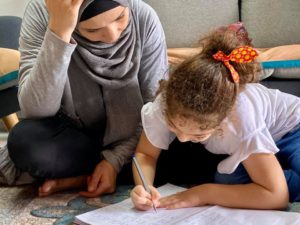
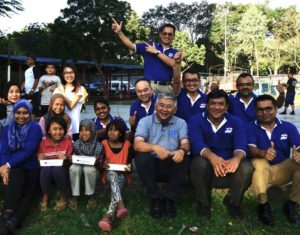
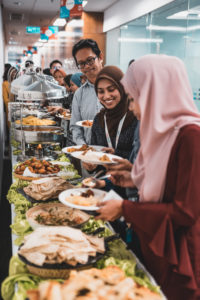
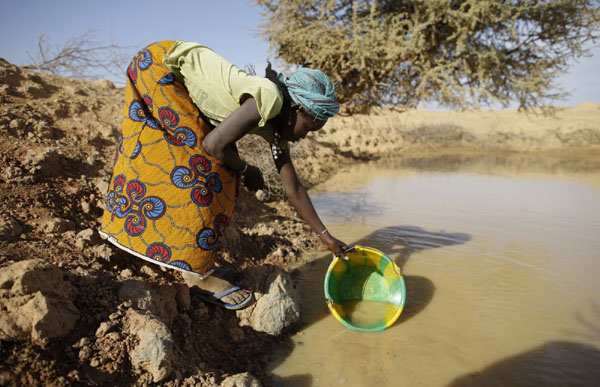 H2GO is a water technology company which aims to eradicate water poverty globally. They believe that clean drinking water is a right for everyone living on earth and that it should be easily accessible to all those who need it. At the heart of the company is Dr.Rajiv. The founder of H2GO, he is soft spoken and humble, but his work speaks volumes. Over the course of 10 years, H2GO has brought clean water to over 2.5 million people all over the world – with an active presence in Columbia, Ghana, Bangladesh, Indonesia, Philippines and Malaysia. T
H2GO is a water technology company which aims to eradicate water poverty globally. They believe that clean drinking water is a right for everyone living on earth and that it should be easily accessible to all those who need it. At the heart of the company is Dr.Rajiv. The founder of H2GO, he is soft spoken and humble, but his work speaks volumes. Over the course of 10 years, H2GO has brought clean water to over 2.5 million people all over the world – with an active presence in Columbia, Ghana, Bangladesh, Indonesia, Philippines and Malaysia. T